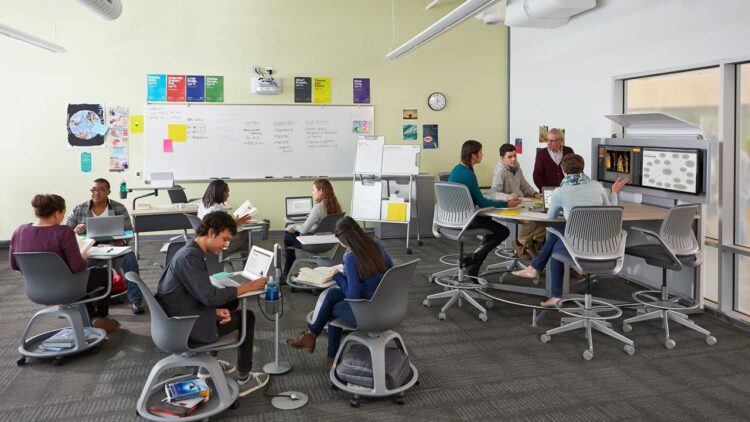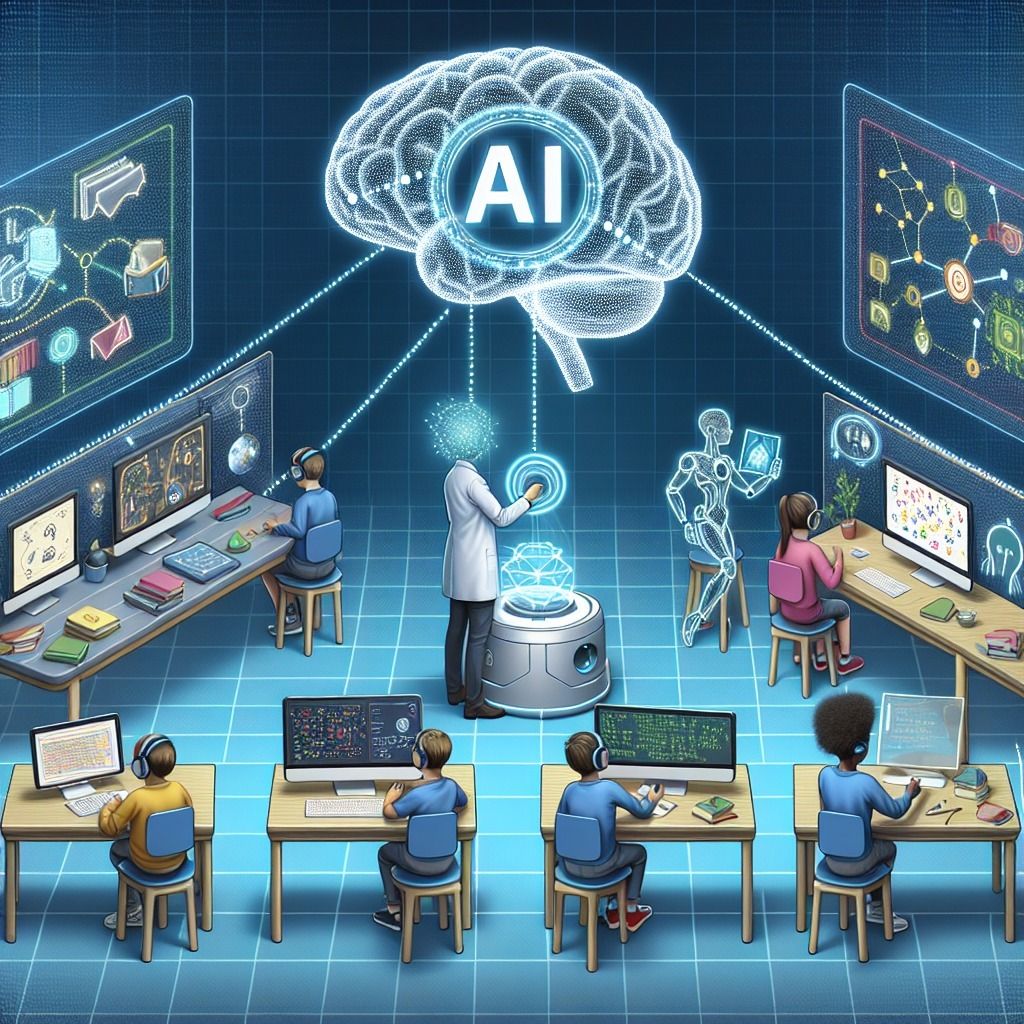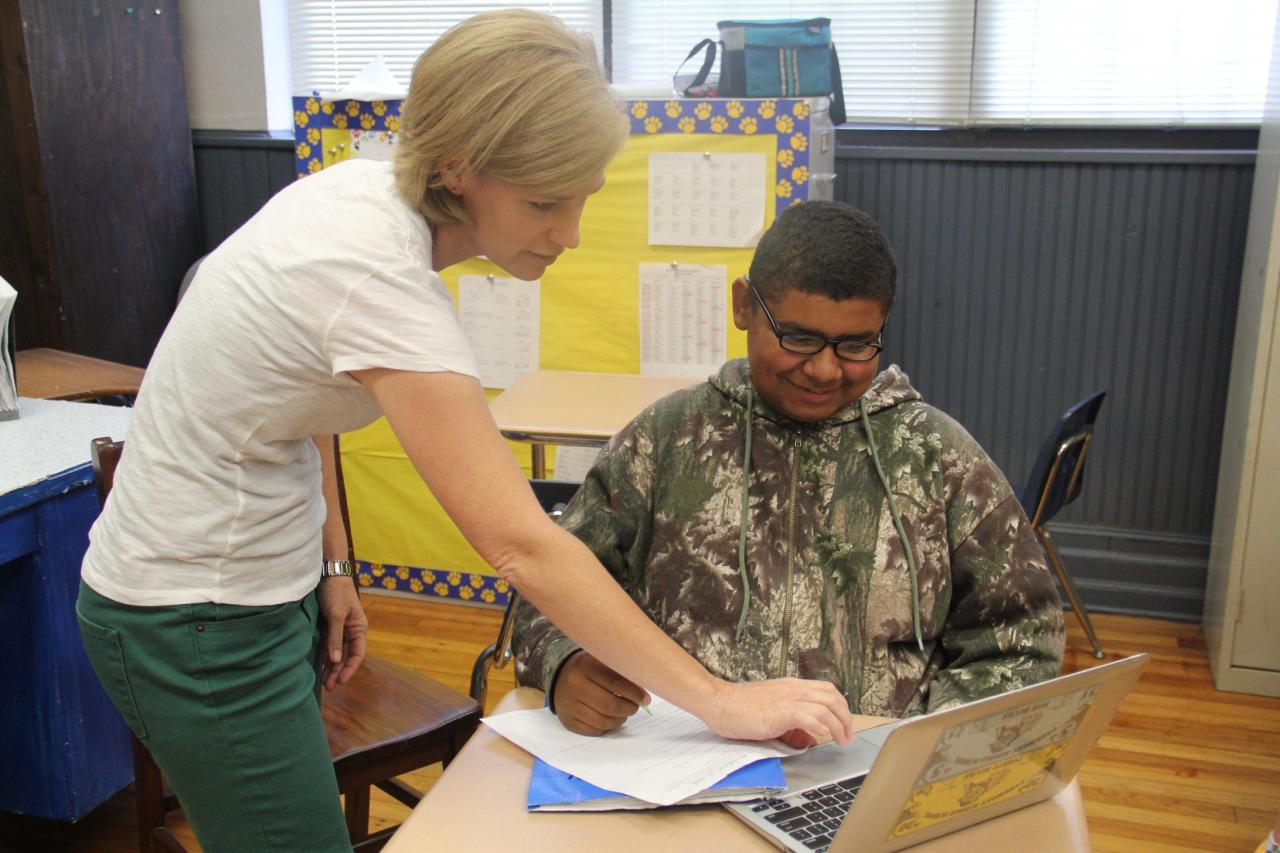The traditional ‘one-size-fits-all’ model of education, where every student progresses through the same curriculum at the same pace, is increasingly showing its limitations in a rapidly diversifying world. In its place, a powerful new paradigm is emerging: personalized learning systems. These innovative approaches leverage technology, data, and advanced pedagogical strategies to tailor the educational experience to each individual student’s unique needs, strengths, interests, and learning styles. Far from being a mere technological enhancement, personalized learning is a fundamental re-imagining of education, promising to unlock unprecedented levels of engagement, comprehension, and academic success. It’s about creating truly tailored education futures where every learner can reach their full potential, paving the way for a more effective and equitable global learning landscape.
The Imperative for Change: Why Traditional Education Falls Short
To fully grasp the transformative potential of personalized learning, it’s crucial to understand the inherent limitations and challenges posed by conventional educational models in the 21st century.
A. The ‘One-Size-Fits-All’ Bottleneck
For generations, education has largely followed a standardized, factory-like model, often referred to as the ‘assembly line’ approach.
- Fixed Pace and Curriculum: Students are typically grouped by age and taught the same material at a predetermined pace. This fails to accommodate learners who grasp concepts quickly or those who require more time and different approaches.
- Lack of Differentiation: Teachers, often facing large class sizes, struggle to differentiate instruction effectively for every student. This leads to some students becoming bored and disengaged, while others fall behind and become frustrated.
- Passive Learning: Traditional methods often emphasize rote memorization and passive reception of information from the teacher, rather than active engagement, critical thinking, and problem-solving.
- Limited Relevance: Curricula can sometimes feel disconnected from students’ individual interests, career aspirations, or real-world applicability, leading to reduced motivation.
- Assessment Limitations: Standardized tests often provide a snapshot of knowledge recall, but fail to capture deeper understanding, critical thinking skills, creativity, or individual progress trajectory.
B. Evolving Learner Demographics and Needs
Today’s students are more diverse than ever before, with varied backgrounds, learning preferences, and future aspirations that demand a more flexible educational response.
- Neurodiversity: Classrooms include students with a wide range of cognitive profiles, including those with learning disabilities, ADHD, autism, and giftedness, all of whom benefit from tailored approaches.
- Socioeconomic Disparities: Students come from diverse socioeconomic backgrounds, impacting their access to resources, prior knowledge, and readiness for school.
- Digital Natives: Younger generations have grown up immersed in digital technology, expecting interactive, personalized, and on-demand experiences from their learning environments.
- Globalized Workforce: The demands of a globalized, rapidly changing job market require skills beyond content knowledge, emphasizing adaptability, critical thinking, creativity, and collaboration—skills not always fostered by traditional methods.
C. Technological Advancements: Enabling the Shift
While traditional models faced inherent limitations, recent technological advancements have now made personalized learning not just an ideal, but a practical reality.
- Ubiquitous Connectivity: Widespread internet access and mobile devices make digital learning resources accessible anywhere, anytime.
- Big Data and Analytics: The ability to collect, process, and analyze vast amounts of educational data allows for granular insights into individual learning patterns, progress, and areas of difficulty.
- Artificial Intelligence (AI): AI algorithms can power adaptive learning platforms, intelligent tutoring systems, content recommendation engines, and automated assessment tools, providing personalized support at scale.
- Cloud Computing: Cloud infrastructure provides the scalable, on-demand resources needed to host complex personalized learning platforms and manage large datasets.
These factors converge to create a compelling case for personalizing the learning journey for every student, moving beyond the constraints of the past.
Core Principles and Components of Personalized Learning Systems
Personalized learning is not a single product or methodology, but rather an overarching framework built upon several key principles and enabled by various technological and pedagogical components.
A. Individualized Learning Paths
At its heart, personalized learning is about creating unique learning paths for each student. This means moving away from a fixed progression for all.
- Paced Learning: Students advance through material at their own optimal speed. They can spend more time on challenging concepts and accelerate through those they master quickly.
- Flexible Sequencing: The order in which topics are covered can be adapted based on pre-assessment results, student interests, or prerequisite knowledge gaps.
- Tailored Resources: Students are provided with a variety of learning materials (videos, interactive simulations, readings, games, projects) that cater to their preferred learning styles and the specific concepts they need to reinforce.
- Competency-Based Progression: Students demonstrate mastery of a concept or skill before moving on, rather than simply advancing based on time spent in a classroom. This ensures deeper understanding and closes learning gaps.
B. Learner Agency and Choice
Empowering students to take an active role in their education is a critical aspect of personalized learning, fostering greater motivation and self-direction.
- Goal Setting: Students actively participate in setting their learning goals, making them more invested in achieving them.
- Choice of Content/Method: Where appropriate, students can choose what they learn (e.g., specific topics within a subject, project themes) and how they learn it (e.g., reading an article, watching a video, engaging in a discussion).
- Self-Monitoring and Reflection: Students are encouraged to monitor their own progress, reflect on their learning strategies, and identify areas where they need support, developing metacognitive skills.
- Voice in Feedback: Students can provide feedback on the learning experience, contributing to the continuous improvement of the personalized system.
C. Data-Driven Insights and Adaptive Technologies
The ability to collect, analyze, and act upon data is fundamental to tailoring the learning experience at scale.
- Formative Assessment: Continuous, low-stakes assessments (quizzes, interactive exercises) provide real-time data on student understanding and progress, allowing for immediate feedback and adjustments.
- Learning Analytics: Sophisticated algorithms analyze student performance data, engagement patterns, time spent on tasks, and interaction with resources to identify strengths, weaknesses, and potential learning obstacles.
- Adaptive Learning Platforms: AI-powered platforms dynamically adjust the content difficulty, type of practice problems, or instructional approach based on a student’s real-time performance, ensuring they are always challenged appropriately.
- Recommendation Engines: Similar to streaming services, these engines suggest relevant learning resources, projects, or next steps based on a student’s profile and progress.
D. Teacher Role Transformation: From Lecturer to Facilitator
In a personalized learning environment, the teacher’s role evolves from being the sole deliverer of content to a facilitator, coach, and guide.
- Personalized Coaching: Teachers can use data insights to identify students who need one-on-one support, small group interventions, or advanced challenges, providing targeted coaching.
- Curriculum Curation: Teachers select and curate a diverse range of high-quality digital and non-digital learning resources to meet varied student needs.
- Social-Emotional Support: With some content delivery automated, teachers can focus more on fostering students’ social-emotional skills, critical thinking, creativity, and collaboration.
- Parent Communication: Data insights enable more precise and meaningful communication with parents about their child’s individual progress and areas for home support.
E. Flexible Learning Environments
Personalized learning often thrives in physical and virtual environments that are adaptable and conducive to varied learning activities.
- Blended Learning Models: Combining traditional face-to-face instruction with online digital content delivery and interactive activities, allowing for flexible pacing and access.
- Flexible Seating and Zones: Classrooms might have zones for independent work, small group collaboration, teacher-led instruction, and quiet reflection, catering to different learning styles and activities.
- Virtual Learning Spaces: Online platforms provide access to resources, collaborative tools, and communication channels, enabling learning beyond the physical classroom.
- Project-Based Learning (PBL): Personalized learning often integrates PBL, where students work on real-world problems over extended periods, allowing for deeper engagement and application of knowledge.
Transformative Advantages of Personalized Learning Systems
The shift to personalized learning promises a profound array of benefits for students, educators, and the broader educational ecosystem, addressing many of the historical shortcomings of traditional models.
A. Enhanced Student Engagement and Motivation
When learning is tailored to individual needs and interests, students become more invested and motivated.
- Relevance: Content connected to a student’s interests or real-world applications makes learning more meaningful and exciting.
- Sense of Accomplishment: Students experience success more frequently by working at their appropriate challenge level, fostering self-efficacy and a positive attitude towards learning.
- Increased Agency: Having choice and a voice in their learning journey empowers students, making them active participants rather than passive recipients.
- Reduced Frustration: Students are less likely to be overwhelmed by overly difficult material or bored by overly easy content, leading to a more positive emotional experience in learning.
B. Accelerated Academic Progress and Deeper Understanding
Personalized paths allow students to move at their optimal pace, ensuring mastery and preventing foundational gaps.
- Targeted Intervention: Immediate identification of learning gaps and provision of specific, remedial resources ensure that students don’t fall behind.
- Advanced Challenge: High-performing students can accelerate through mastered material and tackle more advanced concepts, preventing boredom and maximizing their potential.
- Mastery-Based Learning: Focusing on competency ensures that students truly understand concepts before progressing, leading to deeper retention and application of knowledge.
- Efficient Learning: By focusing on areas where support is needed and bypassing already-mastered content, learning becomes significantly more efficient.
C. More Effective Use of Teacher Time and Resources
While personalized learning requires a different set of skills, it ultimately optimizes teacher efforts and resources.
- Targeted Instruction: Data insights empower teachers to identify specific student needs quickly, allowing them to provide highly targeted individual or small-group instruction, rather than generalized teaching.
- Reduced Grading Burden: Automated assessments and adaptive platforms can significantly reduce the time spent on routine grading, freeing up teachers for more impactful interactions.
- Focus on Higher-Order Skills: With foundational content delivery often handled by adaptive systems, teachers can dedicate more time to fostering critical thinking, creativity, collaboration, and social-emotional learning.
- Professional Development: Teachers gain new skills in data analysis, instructional design for diverse learners, and technology integration, enhancing their professional capabilities.
D. Improved Accessibility and Equity in Education
Personalized learning has the potential to democratize high-quality education and address historical inequities.
- Tailored Support for Diverse Needs: Students with learning disabilities, language barriers, or specific academic challenges can receive highly customized support that was previously unfeasible in traditional settings.
- Geographic Reach: Online personalized learning platforms can bring high-quality educational resources to remote areas or underserved communities, overcoming geographical barriers.
- Flexible Learning Environments: Students who struggle in traditional classroom settings (e.g., due to anxiety, sensory overload) can thrive in more flexible, self-paced, or virtual environments.
- Leveling the Playing Field: By adapting to individual starting points and needs, personalized learning can help close achievement gaps and ensure more equitable outcomes.
E. Data-Driven Decision Making at All Levels
The rich data generated by personalized learning systems provides invaluable insights for continuous improvement.
- Individual Progress Monitoring: Teachers and parents can track granular student progress, identifying trends and celebrating achievements.
- Curriculum Optimization: Data on student mastery (or struggle) with specific topics can inform curriculum designers on what content needs improvement or rearrangement.
- Instructional Strategy Refinement: Schools can analyze data across cohorts to identify which pedagogical approaches are most effective for different types of learners or subjects.
- System-Level Insights: Policymakers and educational administrators can gain macro-level insights into student performance trends, resource allocation effectiveness, and areas for systemic improvement.
Challenges and Considerations in Implementing Personalized Learning
Despite its compelling advantages, the widespread adoption of personalized learning systems faces significant challenges that educational institutions, policymakers, and technology providers must proactively address.
A. High Initial Investment and Infrastructure Requirements
Implementing personalized learning, especially at scale, often requires substantial initial investment in:
- Technology Infrastructure: Reliable internet access, sufficient devices (laptops, tablets), and robust network infrastructure in schools.
- Software Platforms: Licensing costs for adaptive learning platforms, learning management systems (LMS), and analytics tools.
- Professional Development: Extensive training for teachers and administrators to shift their pedagogical practices and effectively leverage new technologies.
The long-term ROI is significant, but the upfront capital can be a barrier for underfunded schools or districts.
B. Data Privacy and Security Concerns
Personalized learning systems collect vast amounts of granular data about students’ learning patterns, progress, and even cognitive styles. This raises critical data privacy and security concerns:
- Sensitive Information: Protecting highly sensitive student data from breaches or misuse is paramount.
- Ethical Use of Data: Ensuring that data analytics are used solely to enhance learning outcomes, not for profiling, marketing, or discriminatory practices.
- Compliance: Adhering to strict data privacy regulations (e.g., FERPA in the US, GDPR in Europe) which vary by region. Developing robust security protocols, anonymization techniques, and transparent data governance policies is essential to build trust.
C. Teacher Training and Mindset Shift
The transition from a traditional teaching role to a facilitator in a personalized learning environment is a significant mindset shift for educators.
- New Pedagogical Skills: Teachers need training in data analysis, curriculum curation, managing blended learning environments, and providing individualized coaching.
- Comfort with Technology: Some educators may require significant support to become proficient with new digital tools and platforms.
- Workload Management: Initially, managing diverse learning paths and resources for individual students can feel overwhelming, requiring effective tools and time management strategies. Ongoing, comprehensive professional development and strong leadership support are crucial.
D. Content Development and Curation Challenges
Creating or curating enough high-quality, diverse, and adaptive learning content to meet the needs of every student’s personalized path is a monumental task.
- Volume and Variety: A truly personalized system requires a vast library of content in various formats (text, video, interactive) to cater to different learning styles and paces.
- Quality Assurance: Ensuring the accuracy, pedagogical effectiveness, and alignment with learning standards of all curated or created content.
- Cost and Time: Developing or licensing high-quality adaptive content can be time-consuming and expensive. Collaboration between educators, content creators, and technology providers is vital.
E. Maintaining Human Connection and Social-Emotional Development
While technology enhances personalization, there’s a risk of over-reliance on screens and a potential reduction in face-to-face interaction.
- Social Learning: Ensuring opportunities for peer collaboration, group projects, and social interaction that are crucial for developing communication and teamwork skills.
- Teacher-Student Relationship: Preserving the vital human connection, mentorship, and emotional support that a teacher provides.
- Digital Divide: Addressing disparities in access to technology and reliable internet connection, which could exacerbate existing inequalities if not properly managed. Design must balance technology-driven personalization with rich human interaction and collaborative experiences.
F. Measuring and Demonstrating Effectiveness
The effectiveness of personalized learning often cannot be fully captured by traditional standardized tests.
- New Assessment Methods: Developing and implementing diverse assessment methods that truly measure mastery, critical thinking, creativity, and progress along individual learning paths.
- Long-Term Impact: Demonstrating the long-term impact of personalized learning on academic achievement, higher education outcomes, and career readiness requires longitudinal studies.
- Standardization vs. Personalization: Balancing the need for individualized learning with accountability measures and comparability across schools or districts.
Best Practices for Implementing Successful Personalized Learning Systems
To maximize the benefits and mitigate the challenges of personalized learning, educational institutions must adopt a strategic, well-planned, and iterative approach.
A. Start with a Clear Vision and Pilot Programs
Don’t attempt a ‘big bang’ overhaul. Begin with a clear vision for what personalized learning aims to achieve in your specific context (e.g., improve math fluency, enhance reading comprehension, foster student agency). Then, launch small, manageable pilot programs within specific classrooms or subjects. Learn from these pilots, gather feedback, iterate, and refine your approach before scaling.
B. Prioritize Comprehensive Professional Development for Educators
The teacher is central to personalized learning. Invest significantly and continuously in robust professional development programs that focus on:
- Pedagogical Shifts: Training in data interpretation, facilitating individualized learning paths, coaching students, and managing blended learning environments.
- Technology Proficiency: Ensuring comfort and expertise with chosen learning platforms and digital tools.
- Mindset Shift: Fostering an understanding of the ‘why’ behind personalized learning and addressing concerns about role changes. Provide ongoing support, coaching, and opportunities for teachers to share best practices.
C. Build a Robust and Secure Data Infrastructure
Data is the engine. Establish a secure, scalable, and reliable data infrastructure to collect, store, process, and analyze student learning data.
- Integrated Platforms: Choose learning management systems (LMS) and adaptive platforms that seamlessly integrate data.
- Data Governance: Develop clear policies for data collection, usage, privacy, and security, ensuring compliance with all relevant regulations.
- Ethical AI: If using AI-powered tools, ensure they are transparent, fair, and free from bias, with human oversight.
D. Curate and Create Diverse, High-Quality Content
A rich and varied content library is essential.
- Leverage Existing Resources: Utilize open educational resources (OER), curated online content, and existing digital textbooks.
- Develop Targeted Content: Create specific content (e.g., short video lessons, interactive quizzes, project templates) to address common learning gaps or cater to unique interests.
- Variety of Modalities: Ensure content is available in diverse formats (visual, auditory, kinesthetic, text-based) to cater to different learning styles.
- Accessibility: Ensure all content is accessible to students with diverse needs, including those with disabilities.
E. Foster Student Agency and Self-Direction
Actively involve students in their learning journey.
- Goal Setting: Teach students how to set SMART (Specific, Measurable, Achievable, Relevant, Time-bound) goals.
- Choice and Voice: Provide opportunities for students to make choices about their learning activities, project themes, and how they demonstrate mastery.
- Reflection: Encourage self-assessment and reflection on their learning process, helping them become more metacognitive learners.
- Feedback Loops: Create systems for students to provide feedback on the effectiveness of their personalized learning experience.
F. Emphasize Social-Emotional Learning (SEL) and Collaboration
Personalized learning should not be isolating.
- Group Work: Design frequent opportunities for collaborative projects, peer tutoring, and group discussions.
- Teacher-Led Interactions: Dedicate teacher time to small group instruction, one-on-one coaching, and fostering strong teacher-student relationships.
- SEL Curriculum: Integrate explicit social-emotional learning curriculum to help students develop self-awareness, self-management, responsible decision-making, and relationship skills.
G. Re-evaluate Assessment Strategies
Move beyond traditional summative tests to a more holistic assessment approach.
- Formative Assessment: Use continuous, low-stakes assessments to guide instruction and provide immediate feedback.
- Performance-Based Assessment: Incorporate projects, presentations, portfolios, and real-world simulations to assess deeper understanding and skill application.
- Growth Mindset: Focus on measuring individual student growth and progress over time, rather than solely on comparative scores.
- Digital Portfolios: Encourage students to build digital portfolios showcasing their work and learning journey.
H. Engage Parents and the Community
Personalized learning is a significant shift, and parental and community buy-in is vital.
- Clear Communication: Explain the philosophy, benefits, and implementation of personalized learning.
- Access to Progress Data: Provide parents with user-friendly dashboards to track their child’s progress and identify areas where they can offer support.
- Workshops: Offer workshops or information sessions for parents to understand the new learning models and how they can support their child at home.
- Community Partnerships: Engage local businesses, universities, and organizations for mentorship, project opportunities, and real-world learning experiences.
The Future Trajectory of Personalized Learning Systems
Personalized learning is not a static concept; it’s a rapidly evolving field, driven by technological innovation and a deepening understanding of learning science. The future promises even more sophisticated and impactful applications.
A. Hyper-Personalization with Advanced AI
The next wave of personalized learning will move towards hyper-personalization, where AI algorithms create learning experiences that are incredibly granular and responsive.
- Emotion AI: Systems that detect student emotions (e.g., frustration, confusion, engagement) and adapt content or provide support accordingly.
- Cognitive Modeling: More sophisticated AI models that understand individual cognitive processes and tailor instruction based on how a student thinks and solves problems.
- Neuroscience Integration: Leveraging insights from neuroscience to design learning experiences that are optimized for brain function and memory consolidation.
- AI-Generated Content: AI tools assisting in or even generating highly customized learning content on the fly, including interactive exercises and simulations, to fill specific learning gaps identified by the system.
B. Immersive Learning Experiences (AR/VR/Metaverse)
The integration of Augmented Reality (AR), Virtual Reality (VR), and eventually, full-fledged metaverse platforms will revolutionize how students engage with content.
- Virtual Field Trips: Students can virtually explore historical sites, dissect virtual organisms, or tour distant planets, making learning highly experiential.
- AR Overlays: Overlaying digital information onto physical objects (e.g., a student pointing a tablet at a machine to see its internal workings) for hands-on, contextualized learning.
- Collaborative Virtual Spaces: Students and teachers can interact in shared virtual environments, fostering collaboration regardless of physical location.
- Gamified Learning: Creating highly engaging, immersive learning games that adapt difficulty and content to individual performance, making learning feel less like work and more like play.
C. Lifelong Learning Ecosystems
The concept of personalized learning will extend beyond K-12 and higher education into comprehensive lifelong learning ecosystems.
- Micro-credentials and Skill Stacks: Learners will acquire personalized sets of micro-credentials or digital badges for specific skills, building flexible pathways to employment or further education.
- Adaptive Career Pathways: AI-driven platforms will recommend personalized learning paths for career transitions or upskilling, based on market demand, individual skills, and interests.
- Corporate Training: Personalized adaptive learning will become standard in corporate training to efficiently onboard new employees and reskill existing ones for evolving job roles.
- Intergenerational Learning: Platforms that facilitate learning across age groups, allowing individuals to share expertise and engage in personalized collaborative projects.
D. Enhanced Role of Learning Facilitators and Mentors
As AI handles more content delivery, the human role in education will become even more focused on high-value interactions.
- AI-Supported Mentorship: Teachers and mentors will be equipped with AI-powered dashboards that highlight specific student needs, allowing them to provide more precise and impactful guidance.
- Social-Emotional Coaching: The emphasis will shift further towards developing students’ critical thinking, problem-solving, creativity, collaboration, and social-emotional intelligence—areas where human interaction is irreplaceable.
- Community Connectors: Educators will increasingly act as connectors, linking students with real-world experts, project opportunities, and community resources to enrich their personalized learning journeys.
E. Blockchain for Credentialing and Data Security
Blockchain technology could play a significant role in securing student data and managing credentials.
- Immutable Learning Records: Creating tamper-proof records of student achievements, competencies, and learning pathways.
- Secure Data Sharing: Allowing students to securely share their verified learning data with prospective employers or educational institutions, while maintaining control over their privacy.
- Decentralized Identity: Students owning and controlling their educational identities and data.
Conclusion
Personalized learning systems represent not just an evolution, but a necessary revolution in education. The traditional, static models are increasingly ill-equipped to meet the diverse needs of 21st-century learners and the demands of a rapidly changing world. By harnessing the power of technology, data analytics, and a deep understanding of individual learning, personalized learning creates truly tailored education futures where every student can learn at their own pace, leverage their strengths, explore their interests, and achieve mastery.
While the implementation of such systems involves significant challenges—from initial investment and data privacy concerns to the crucial shift in teacher roles—the profound benefits for student engagement, academic progress, equity, and the optimized use of educational resources are undeniable. As AI becomes more sophisticated, immersive technologies more accessible, and the need for lifelong learning more apparent, personalized learning will continue to evolve, empowering individuals to unlock their full potential and shaping a more intelligent, adaptive, and equitable global learning landscape. This is the blueprint for empowering the next generation of learners, one unique path at a time.









